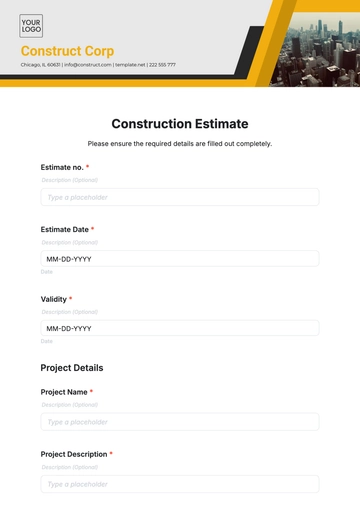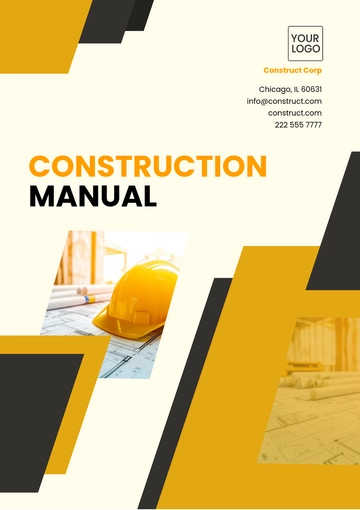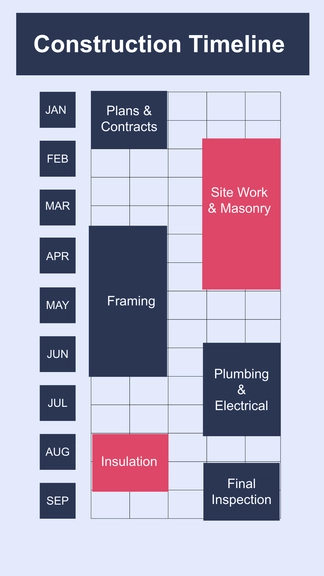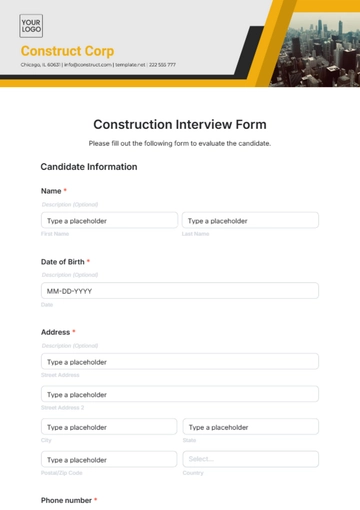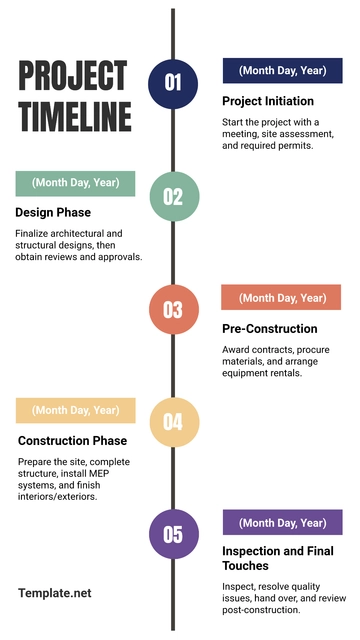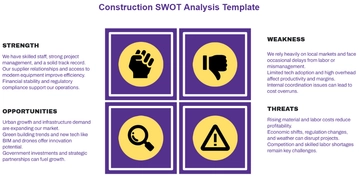Free Construction Logistics Requirements

Prepared By: [YOUR NAME]
Date: [DATE]
I. Introduction
The Construction Project at [Project Name] represents a complex and ambitious endeavor requiring thorough planning and effective coordination. This logistics plan is designed to outline the guidelines and specifications for managing the various aspects of the construction site, including the handling of materials, equipment, and personnel. The primary objectives are to minimize delays, optimize resource utilization, and ensure compliance with safety and regulatory standards throughout the project lifecycle.
II. Scope
This document delineates the logistics requirements for the entire construction site, covering the movement, storage, and handling of materials and equipment, scheduling of activities, safety measures, regulatory compliance, resource management, communication protocols, and contingency plans.
III. Logistics Plan
A. Material Handling
|
|
|
|
|
|
B. Equipment Management
Safe Handling: Thoroughly train all personnel in safe and correct equipment usage, covering basic operations, safety protocols, and emergency procedures, and perform detailed pre-use inspections to detect and resolve any potential equipment problems, ensuring safety and reliability.
Maintenance: Ensure that routine maintenance and repairs are scheduled and carried out according to the recommendations provided by the manufacturer. It is essential to maintain detailed and comprehensive logs of all maintenance activities undertaken.
Storage: Ensure that all equipment is in designated, secure areas to ensure that it is protected from adverse weather conditions and to prevent unauthorized individuals from gaining access.
C. Personnel Coordination
Staff Logistics: Implementing strict access controls and strategically assigning tasks based on skills are essential for security, order, and efficiency.
Coordination: Organize and schedule work shifts and breaks in a manner that guarantees continuous operational coverage while simultaneously preventing any instance of staff being overworked.
IV. Scheduling
Delivery Timelines:
Materials: Schedule deliveries to align exactly with the different stages of the construction project to prevent site congestion and maintain an orderly workflow.
Equipment Use:
Timetable: Create a detailed timetable that specifies the exact times and durations for using different equipment, which will help avoid conflicts from overlapping usage and ensure equipment availability when required.
Milestones:
Key Dates: Make certain that all crucial project milestones are conveyed clearly and effectively to every stakeholder involved to ensure alignment and a shared understanding among all parties.
Activity | Start Date | End Date |
|---|---|---|
Foundations | 01/01/2050 | 01/15/2050 |
Framing | 01/20/2050 | 02/05/2050 |
V. Safety Measures
Personal Protective Equipment (PPE): All personnel must wear appropriate personal protective equipment (PPE), which includes essential items like hard hats, gloves, and safety glasses to ensure job safety and protection.
Equipment Safety: Conduct consistent and detailed safety inspections and comprehensive maintenance on all equipment used at the facility to ensure compliance with established safety standards and maintain safe operating conditions.
Emergency Procedures: It is crucial to have clear and thorough emergency protocols that include detailed evacuation plans for safe and orderly exits, as well as explicit first-aid instructions for injured or distressed individuals, to ensure everyone's safety and well-being.
VI. Regulatory Compliance
The logistics plan will adhere to and uphold all pertinent legal and regulatory mandates. This includes ensuring full compliance with local building codes, observing all environmental regulations, and abiding by labor laws. Each aspect of the logistics plan will be carefully reviewed and adjusted as necessary to align with these comprehensive standards to guarantee that no legal or regulatory criteria are overlooked or violated.
VII. Resource Management
Efficient allocation of resources including personnel, equipment, and materials will be ensured by coordinated planning and monitoring.
Personnel Allocation: Tasks are assigned to staff members by thoroughly evaluating their skills and the project's specific requirements, ensuring an optimal match between team capabilities and project needs.
Equipment Utilization: The meticulous planning and systematic scheduling of equipment usage aim to prevent task overlaps and ensure continuous operation, ultimately balancing and optimizing time and resources to avoid conflicts and inefficiencies.
VIII. Communication Protocols
Clear and established procedures for internal and external communication regarding logistics will be followed to ensure smooth operations.
Internal Communications: The project team will gather together regularly to hold meetings in which they will offer updates on their individual and collective efforts. During these meetings, they will engage in discussions about various logistical issues and carefully review the progress that has been achieved so far.
External Communications: Maintaining regular and detailed communication with suppliers, contractors, and other key stakeholders ensures effective coordination of delivery schedules and the swift resolution of any arising issues or discrepancies.
IX. Contingency Plans
Alternative Suppliers: A comprehensive and meticulously detailed compilation that encompasses every approved alternative supplier who delivers materials deemed to be of essential importance.
Backup Equipment: Make certain that supplementary equipment is both readily available and easily accessible so that it can function as a replacement if the primary equipment experiences any malfunctions, breakdowns, or failures.
Additional Labor: Devise a comprehensive strategy to rapidly identify and recruit additional personnel, should the need arise, to ensure that project deadlines are met without delay.
- 100% Customizable, free editor
- Access 1 Million+ Templates, photo’s & graphics
- Download or share as a template
- Click and replace photos, graphics, text, backgrounds
- Resize, crop, AI write & more
- Access advanced editor
Organize your construction logistics effortlessly with the Construction Logistics Requirements Template from Template.net. This editable and customizable template allows you to specify logistics needs and requirements for any construction project. Customize details using our Ai Editor Tool to fit your unique project demands. Its structured layout helps streamline the logistics planning process, ensuring all aspects are covered efficiently.
You may also like
- Construction Bid Proposal
- Construction Business Card
- Construction Business Plan
- Construction Certificate
- Flyers Construction
- Construction ID Card
- Construction Letter
- Construction Letterhead
- Construction Poster
- Construction Presentation
- Construction Profile
- Construction Checklist
- Construction Quotation
- Construction Receipt
- Construction Report
- Construction Sign
- Construction Plan
- Construction Logo
- Construction Agreement
- Construction Form
- Construction Brochure
- Construction Contract
- Construction Proposal
- Construction Sheet
- Construction Budget
- Construction Schedule
- Construction Meeting Minute
- Construction Banner
- Construction Estimate
- Construction Policy
- Construction Invoice
- Construction Request for Quotation (RFQ)






